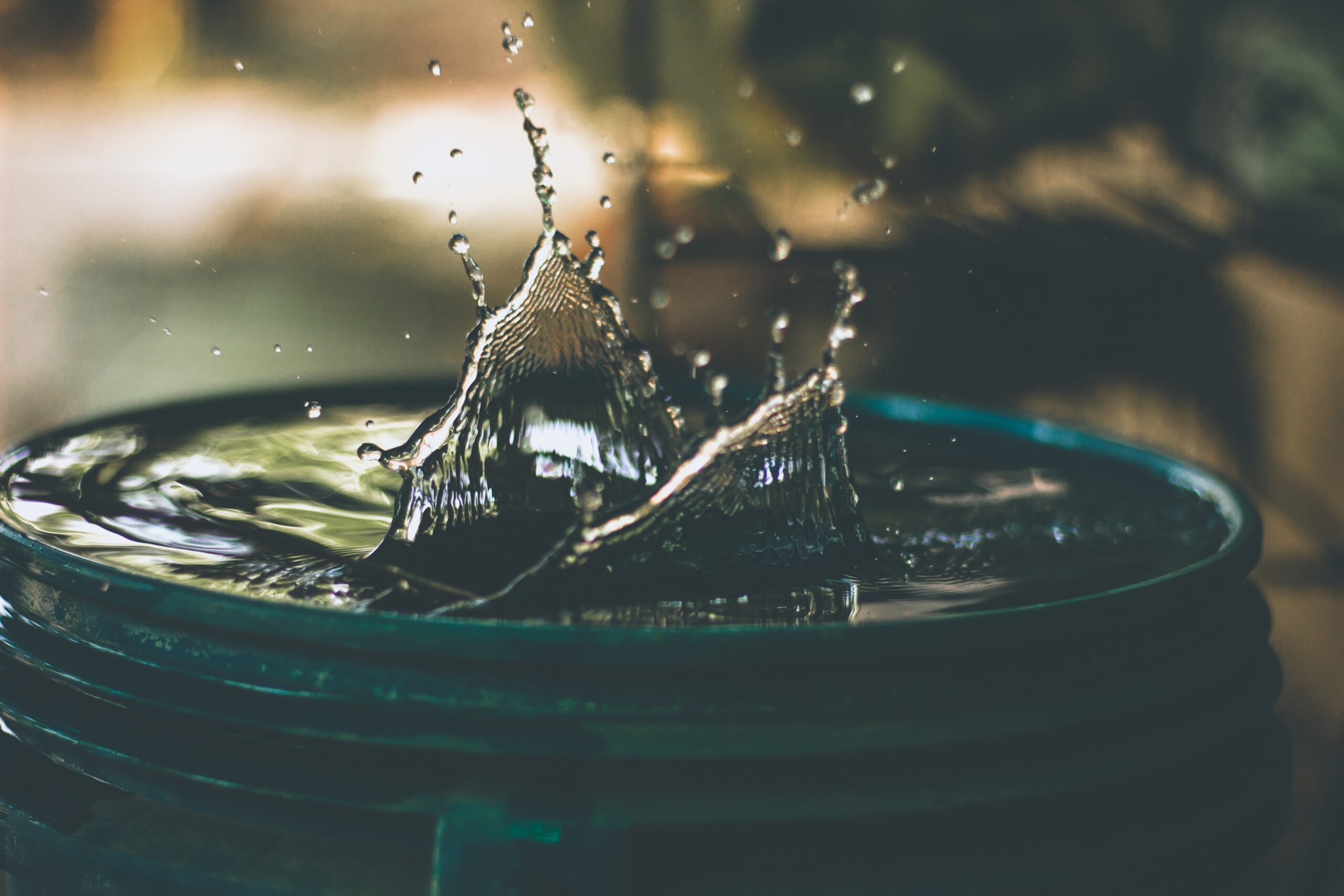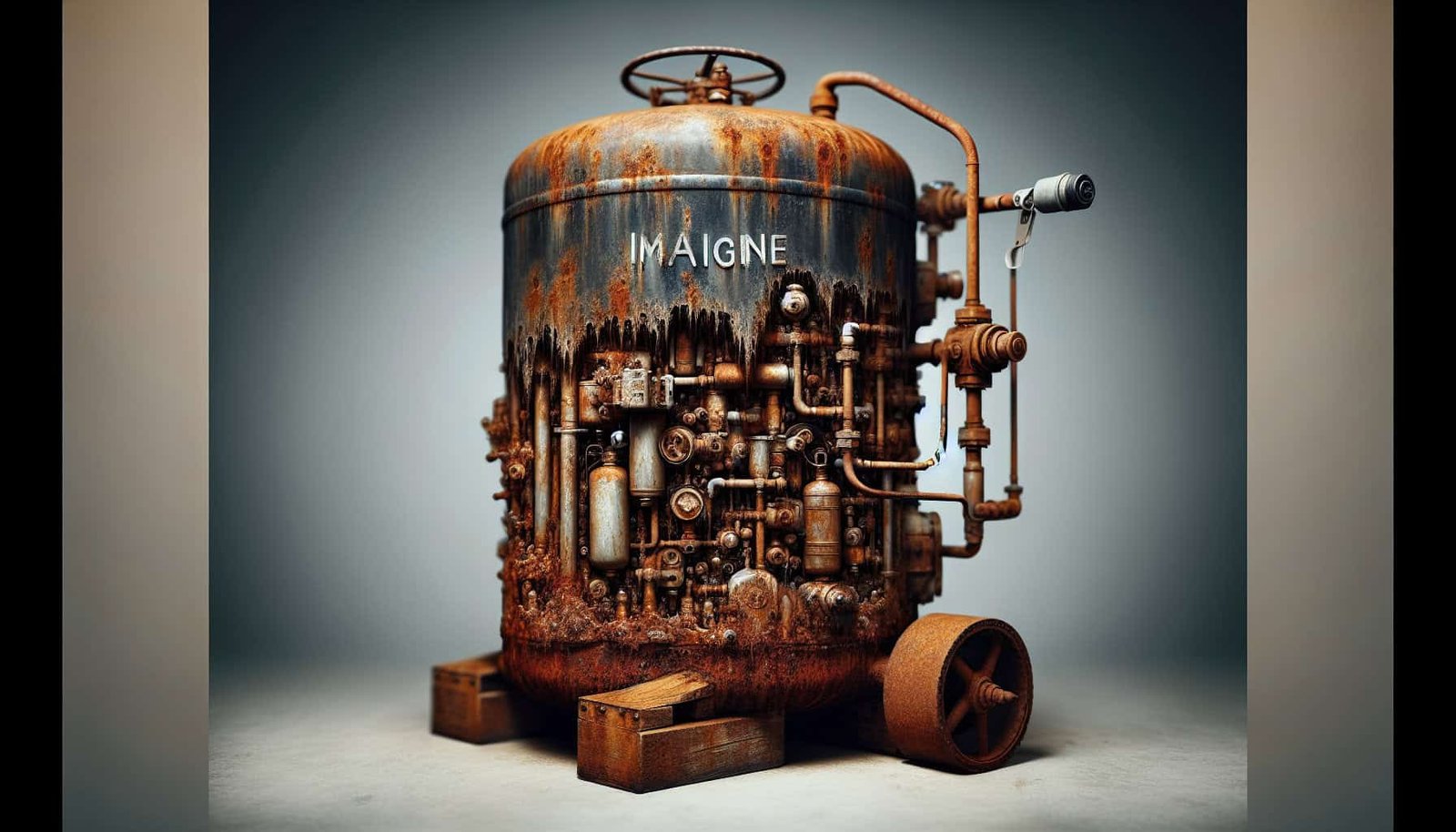If you rely on a well for your water supply, it’s important to understand the safety issues that can arise when it comes to maintaining your well water pressure tank. In this article, we will explore the potential hazards associated with neglecting regular maintenance intervals for your pressure tank. From the risk of pressure build-up to the potential for contamination, understanding these safety considerations is crucial to ensuring the health and well-being of you and your family. So, let’s dive in and learn more about the importance of proper maintenance for your well water pressure tank.
Overview of well water pressure tanks
Well water pressure tanks are essential components of private wells, responsible for regulating the pressure of the water delivered to your household. These tanks work by storing water under pressure, so that it can be readily available when you need it. By maintaining a constant pressure, well water pressure tanks ensure a consistent flow of water throughout your home. Whether you’re using water for daily activities like showering or washing dishes, or operating appliances such as washing machines, an efficient pressure tank is crucial for a seamless water supply experience.
Definition and purpose of well water pressure tanks
A well water pressure tank is a large, cylindrical container made of durable materials such as steel or fiberglass. Its main purpose is to store water under pressure, allowing it to be readily available for use. The tank is typically connected to the well pump, which fills it up as water is pumped from the well into the tank. When you turn on a faucet or appliance, water flows out of the tank, replenishing itself as the pressure decreases. This constant supply of water is essential for uninterrupted and reliable access to well water in your home.
Importance of maintaining well water pressure tanks
Regular maintenance of well water pressure tanks is of utmost importance to ensure their optimal performance and longevity. Neglecting proper maintenance can lead to various issues such as decreased water pressure, malfunctioning pumps, and even contamination of the water supply. By proactively maintaining your pressure tank, you can prevent these problems from arising, saving you time, money, and frustration in the long run. Regular maintenance also helps identify any potential safety hazards, allowing you to address them promptly and ensure the well-being of your household.
Common problems associated with well water pressure tanks
Well water pressure tanks can experience a range of issues over time, impacting their functionality and efficiency. One common problem is the development of a waterlogged tank, where excessive amounts of water enter the tank due to a failing air bladder or a malfunctioning valve. This can lead to decreased pressure and irregular cycling of the pump, putting strain on the system and potentially causing damage. Other common problems include leaks, corrosion, and sediments buildup, all of which can negatively affect the pressure tank’s performance. By recognizing these issues, you can take the necessary steps to address them and ensure the optimal functioning of your well water system.
Understanding safety issues
While maintaining well water pressure tanks, it is crucial to prioritize safety to protect yourself, your family, and your property. Understanding potential risks and hazards associated with working on pressure tanks will empower you to take appropriate precautions and avoid accidents.
Potential risks and hazards
When working on well water pressure tanks, there are various potential risks that you need to be aware of. Electric shock is a primary concern, as pressure tanks are often electrically powered. When conducting maintenance, there is a risk of coming into contact with electrical components, which can lead to severe injuries or even fatalities. Additionally, exposure to chemicals used in cleaning or disinfecting the tank can be hazardous if not handled properly. The weight and size of pressure tanks can also pose physical hazards, with the risk of strain or injury when accessing or moving these heavy objects. By understanding these risks, you can prioritize safety measures accordingly.
Impact of neglected maintenance
Neglecting regular maintenance of well water pressure tanks can have significant consequences. Not only can it result in decreased performance and efficiency, but it can also lead to safety hazards. For instance, if the tank is not properly cleaned and maintained, it can become a breeding ground for bacteria and other contaminants. This puts your water supply at risk of contamination, potentially causing health issues for you and your family. Neglected maintenance can also lead to more frequent breakdowns and costly repairs. By addressing any maintenance requirements promptly, you can avoid these negative consequences and ensure the longevity and safety of your well water system.
Importance of regular inspections
Regular inspections of well water pressure tanks are crucial to identify any maintenance requirements or safety issues. By conducting routine checks, you can proactively address any potential problems before they escalate. During inspections, make sure to check for signs of leakage, corrosion, or damage to the tank or its components. Additionally, ensure that the pressure tank is properly secured, as any loose connections can lead to malfunctions. Regular inspections also provide an opportunity to assess the air pressure in the tank’s bladder and verify that it falls within the manufacturer’s recommended range. By staying vigilant and conducting regular inspections, you can prevent major issues and protect the integrity of your well water pressure tank.
Determining maintenance intervals
Determining the proper maintenance intervals for your well water pressure tank is essential to ensure its consistent performance and avoid potential hazards. Several factors come into play when deciding how often maintenance should be conducted.
Factors affecting maintenance intervals
The frequency of maintenance depends on various factors, including the age of the pressure tank, the water quality in your area, and the level of water usage in your household. Older tanks or those exposed to harsh water conditions may require more frequent maintenance to address wear and tear or prevent corrosion. Similarly, if your water supply is prone to sediments or other contaminants, regular maintenance becomes even more critical. Finally, the more water your household consumes, the more strain is placed on the pressure tank, necessitating more frequent inspections and maintenance.
Manufacturer recommendations
Manufacturers of well water pressure tanks often provide guidelines regarding the recommended maintenance intervals. These guidelines are based on years of expertise and testing, ensuring that you can optimize the lifespan and functionality of your pressure tank. It is advisable to consult the manufacturer’s documentation or reach out to their customer support for specific recommendations regarding maintenance intervals. By following their guidance, you can ensure that your pressure tank operates at its best and remains safe for use.
Local regulations and guidelines
Local regulations and guidelines may also impact maintenance intervals for well water pressure tanks. Depending on where you reside, there may be specific requirements regarding inspections or maintenance of private well systems. To ensure compliance with local regulations, contact your local health department or water authority for information and recommendations. Adhering to these regulations will not only keep your pressure tank in optimal condition but also contribute to the overall safety and quality of your well water system.

Signs of maintenance requirements
While regularly scheduled maintenance is essential, it is equally crucial to be alert for any signs indicating maintenance requirements between inspections. By recognizing these signs, you can promptly address any issues and prevent them from escalating into more significant problems.
Detecting pressure irregularities
If you notice fluctuations in water pressure throughout your home, it may be an indication of potential problems with your pressure tank. Irregular pressure can be a sign of a failing bladder or a faulty pressure switch, both of which require immediate attention. If you experience sudden drops or surges in water pressure, it is essential to investigate the cause and take appropriate measures to resolve the issue.
Unusual noises or vibrations
Another sign that your pressure tank may require maintenance is if you hear unusual noises or detect excessive vibrations during its operation. These symptoms may indicate loose components, air leaks, or even an imbalanced water pressure system. Identifying and addressing the source of these noises or vibrations promptly can help prevent further damage and ensure a smooth and quiet operating pressure tank.
Leakage and moisture buildup
Leakage or moisture buildup in or around the pressure tank is an obvious sign that maintenance is required. Whether it’s a minor drip or a more significant leak, any signs of water escaping from the tank need to be addressed promptly. Ignoring or postponing repairs can lead to further damage and potential safety hazards. If you notice any signs of leakage or moisture buildup, it is advisable to contact a professional well water maintenance provider to assess the situation and perform necessary repairs.
Steps for safe maintenance
Performing maintenance on your well water pressure tank requires careful planning and attention to safety. By following these steps, you can ensure that maintenance is conducted in a safe and efficient manner.
Shutting off power and water supply
Before starting any maintenance procedures, it is essential to shut off the power and water supply to the pressure tank. This will eliminate the risk of accidental electrical shock and prevent any water flow during the maintenance process. Locate the circuit breaker or switch that controls the power supply to the pressure tank and turn it off. Additionally, shut off the main water valve leading to the tank to prevent any water from entering during maintenance.

Draining the pressure tank
To perform certain maintenance tasks, such as cleaning or repairing the tank, it may be necessary to drain the water from the pressure tank. To do this, locate the drain valve on the tank and attach a hose to it. Ensure that the other end of the hose leads to a suitable draining area, such as a floor drain or an outdoor area away from any water sources. Open the drain valve and allow the tank to completely drain before proceeding with maintenance tasks.
Inspecting and cleaning the tank
Once the tank is drained, thoroughly inspect its components for any signs of damage, corrosion, or wear. Check the bladder, valves, fittings, and connections for leaks or loose parts. If necessary, clean the interior of the tank using a mild detergent and water, making sure to remove any accumulated sediments or debris. Avoid using chemicals or abrasive materials that may damage the tank or its components. After cleaning, inspect the tank once again to ensure it is in proper condition before proceeding with any reassembly.
Potential safety hazards during maintenance
While performing maintenance on well water pressure tanks, it is essential to be aware of potential safety hazards to protect yourself and others involved. By understanding these risks, you can take appropriate precautions and minimize the likelihood of accidents or injuries.
Electrical risks
Working on pressure tanks involves potential exposure to electrical components, which can be hazardous if not handled with caution. Ensure that the power supply to the tank is adequately shut off and that no accidental power flow can occur during maintenance. Use insulated tools and avoid touching any exposed electrical parts. If you are unsure about handling electrical components, it is advisable to seek assistance from a qualified and licensed professional.
Chemical exposure
Cleaning or disinfecting the pressure tank may involve the use of chemicals that can be harmful if not handled properly. Always read and follow the manufacturer’s instructions when using cleaning agents, and wear appropriate personal protective equipment, such as gloves and goggles, to minimize exposure. Work in a well-ventilated area to prevent the inhalation of potentially harmful fumes. If you are unsure about handling chemicals or cleaning agents, consider hiring a professional who is trained in their proper use.
Physical injuries
The weight and size of pressure tanks can pose physical risks during maintenance. Take precautions when handling or moving the tank to prevent strains, sprains, or other injuries. Use proper lifting techniques, such as bending at the knees and keeping your back straight, when lifting heavy objects. If necessary, use mechanical aids or ask for assistance to safely move or reposition the tank. By prioritizing physical safety, you can avoid unnecessary injuries and maintain a safe work environment.

Proper handling of pressure tanks
Proper handling of well water pressure tanks is crucial to ensure both your safety and the integrity of the tank itself. By following these guidelines, you can minimize the risk of accidents or damages during maintenance.
Use of personal protective equipment
Always wear appropriate personal protective equipment (PPE) when working on pressure tanks. This may include gloves, safety goggles, and protective clothing to protect yourself from potential hazards, such as chemicals or sharp edges. Ensure that PPE fits properly and is in good condition to provide effective protection. Additionally, consider using respiratory protection if you anticipate exposure to dust or fumes during maintenance tasks.
Safe handling and transportation
When moving or repositioning a pressure tank, take necessary precautions to prevent accidents or damages. Ensure that you have a clear path and a stable surface to avoid tripping or dropping the tank. Use mechanical aids, such as dollies or pulleys, if necessary, to assist with lifting or moving heavy tanks. Avoid dragging or sliding the tank, as this can cause damage to both the tank and the surfaces it comes into contact with. Proper handling and transportation techniques will help maintain the tank’s structural integrity and prevent accidents.
Disposal of hazardous materials
If you need to dispose of any hazardous materials, such as cleaning agents or removed components, it is important to do so in accordance with local regulations. Improper disposal of hazardous materials can have detrimental effects on the environment and public health. Contact your local waste management authority or hazardous waste collection facility for guidance on the proper disposal methods. By responsibly disposing of hazardous materials, you contribute to a safer and more sustainable environment.
Importance of professional maintenance
While some maintenance tasks can be performed by homeowners, certain aspects of pressure tank maintenance require the expertise of well water professionals. Hiring a professional can offer numerous benefits and ensure that your pressure tank is maintained to the highest standards.
Benefits of hiring a well water professional
Well water professionals possess extensive knowledge and experience in maintaining well water pressure tanks. Their expertise allows them to accurately assess the condition of the tank, identify any underlying issues, and perform necessary repairs or maintenance tasks. By entrusting your pressure tank maintenance to a professional, you can have peace of mind knowing that your system is in capable hands.
Specialized knowledge and equipment
Well water professionals have access to specialized tools and equipment designed specifically for well water systems. They are equipped to handle the unique challenges associated with pressure tanks, and their expertise ensures that maintenance tasks are performed efficiently and effectively. Professionals can also offer valuable advice and recommendations regarding the optimal functioning and longevity of your pressure tank.
Ensuring compliance with safety standards
By hiring a well water professional, you can ensure that your pressure tank maintenance is conducted in compliance with all relevant safety standards and regulations. Professionals are aware of the latest industry guidelines and best practices, minimizing the risk of accidents or safety hazards during maintenance. Entrusting your pressure tank to a professional allows you to focus on other priorities while maintaining the highest level of safety and performance for your well water system.
Common mistakes to avoid
To ensure the longevity and optimal performance of your well water pressure tank, it is essential to avoid common mistakes that can lead to problems or safety hazards.
Neglecting regular maintenance
One of the most common mistakes homeowners make is neglecting regular maintenance of their well water pressure tanks. By failing to conduct inspections and address maintenance requirements promptly, you increase the risk of damage, decreased performance, and potential safety hazards. Establishing a regular maintenance schedule and adhering to it ensures that your pressure tank remains in optimal condition, avoiding unnecessary breakdowns or costly repairs.
Using incompatible materials or tools
Using incompatible materials or tools during maintenance can have detrimental effects on your pressure tank. For example, using the wrong type of cleaning agent or abrasive material can cause damage to the tank’s interior or its components. Similarly, using incorrect tools can result in stripped screws, damaged fittings, or ineffective repairs. Always consult the manufacturer’s guidelines or seek professional advice to ensure that you are using the appropriate materials and tools for your pressure tank maintenance.
Overlooking signs of damage or wear
Ignoring or overlooking signs of damage or wear can lead to more significant problems with your pressure tank. It is crucial to be proactive and address any signs of leakage, corrosion, or irregularities in pressure as soon as they arise. Recognizing and addressing these issues promptly can prevent further damage, extend the lifespan of your pressure tank, and ensure the safety and reliability of your well water system.
Resources for further information
If you’re looking to further expand your knowledge on well water pressure tanks or seeking additional guidance on maintenance, there are various resources available to you.
Government agencies and organizations
Government agencies, such as the Environmental Protection Agency (EPA) or the Department of Health, often provide resources and guidelines on private well maintenance. These organizations offer valuable information on safety standards, maintenance practices, and potential hazards associated with well water systems. Visit their websites or contact them directly to access informative publications, brochures, or online resources specific to your region.
Online resources and forums
Online platforms dedicated to well water systems and maintenance provide valuable insights and experiences from homeowners and professionals alike. Websites, forums, and blogs offer a wealth of information on troubleshooting common issues, sharing maintenance tips, and providing recommendations for reputable well water professionals or products. Engaging in online communities allows you to connect with others facing similar challenges and learn from their experiences.
Local well water professionals
For personalized advice and hands-on assistance, reach out to local well water professionals in your area. These professionals specialize in maintaining and servicing well water systems, including pressure tanks. They have firsthand knowledge of the specific challenges and requirements in your region and can provide tailored maintenance recommendations based on their expertise. By consulting well water professionals, you can ensure that your pressure tank receives the care it needs to operate at its best.
In conclusion, well water pressure tanks play a crucial role in ensuring a reliable and uninterrupted water supply to your household. Maintaining these tanks regularly is essential for their optimal performance, as well as the safety and well-being of your family. By understanding the risks associated with pressure tank maintenance, determining appropriate maintenance intervals, and recognizing signs of maintenance requirements, you can address any issues promptly and minimize the likelihood of problems arising. By following safe maintenance procedures, hiring professionals when necessary, and avoiding common mistakes, you can ensure the longevity and optimal functioning of your well water pressure tank. Remember to consult reputable resources and professionals for further information or assistance on pressure tank maintenance.


